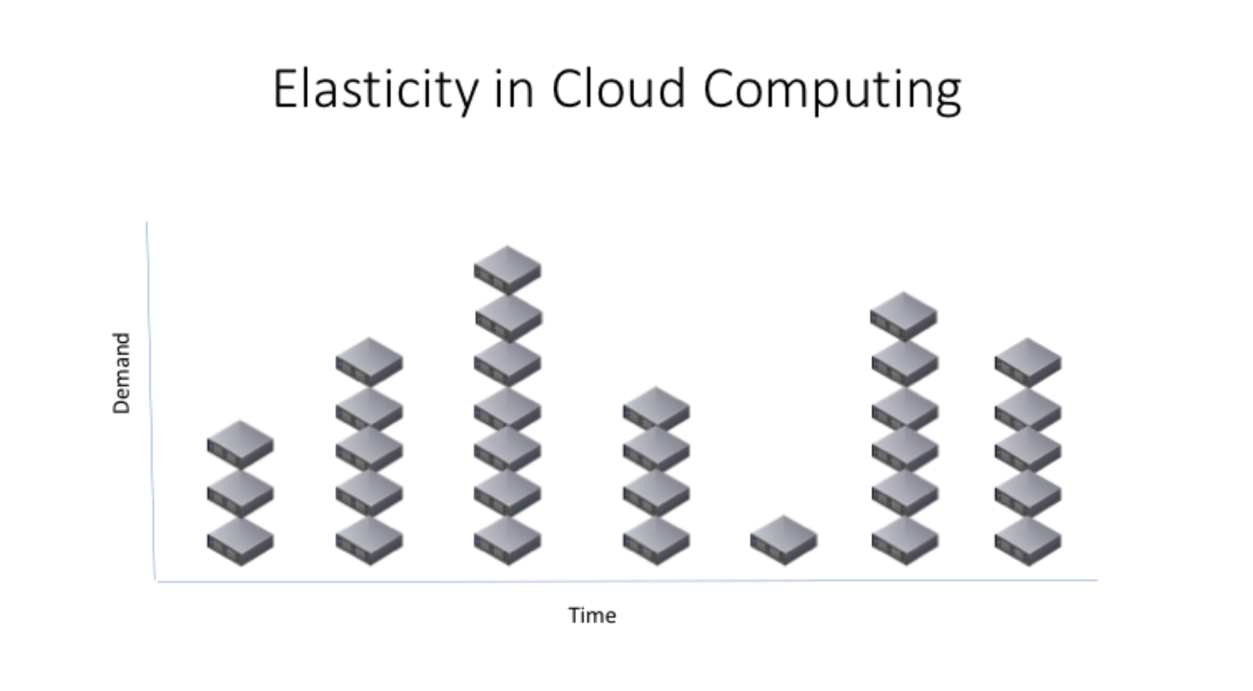The ability to increase or decrease IT resources as needed to meet changing demand, scalability enables organizations to increase workload size within an existing infrastructure without impacting performance. A capability unique to the cloud environment, scalability remains a driving force of its widespread adoption and the evolving dexterity of business infrastructure.
Removing the limit to the physical size of a server’s environment through a planned level of capacity that can grow or shrink as needed is where cloud computing and scalability intersect, business growth trajectories become sustainable, and disruptions or down time are minimal to obsolete.
Contents:
Cloud Scalability vs. Cloud Elasticity
Vertical Scaling vs. Horizontal Scaling vs. Diagonal Scaling
Why is the Cloud Scalable?
Advantages of Cloud Scalability
Cloud Scalability vs. Cloud Elasticity
Though adjacent in scope and seemingly identical, cloud scalability and cloud elasticity are not the same. Elasticity is related to the dynamic use of current resources, whereas scalability is the accommodation of larger workloads without the transformation of complete existing infrastructure.
Changing business requirements and known variability in demand make elasticity an appropriate cloud services adoption, and predetermined increase in business growth warrants an infrastructure that is scalable.
Depiction of an elastic workload over time. Image provided by Turbonomic
Vertical Scaling vs. Horizontal Scaling vs. Diagonal Scaling
Vertical scaling refers to the addition of resources to an existing infrastructure. However, performance is not increased due to the overall capacity of computing power remaining the same. Horizontal scaling compensates where vertical scaling falls short, enabling the addition of nodes to existing infrastructure to accommodate additional workload volume, providing increased performance.
A combination of scaling up and scaling down, diagonal scaling is differentiated through its ability to remove resources from existing servers, as vertical and horizontal scaling only enable the addition of resources and capacity - and not the removal of storage resources as business requirements decrease.
Why Is the Cloud Scalable?
Easily scaled up or down, the flexibility found in virtualization and virtual machines (VMs) are what make cloud architectures scalable. Where physical machines have resources and performance that is relatively set, virtual machines can be moved to a different server or hosted on multiple servers at once, allowing workloads and applications to be shifted to larger VMs as needed.
An asset in scalability efforts and adoption, cloud service providers remain integral in delivering rapid scaling to businesses through their ability to quickly establish the software and hardware necessary for expansion. An otherwise costly undertaking if self-implemented.
Advantages of Cloud Scalability
The definition of a nimble company, the ability to keep a business operational despite unforeseen surges in demand both cost-effectively and efficiently are what make scalability paramount to business success; one that is only possible within the cloud and reflective of the following attributes:
- Convenience: IT administrators and staff are able to add additional VMs on demand and customized to the exact needs of their organization. Saving time that would otherwise be spent setting up physical hardware, teams can respond to organizational needs with only a few clicks.
- Flexibility and Speed: Crucial to businesses where a quick response time is imperative, scalability in the cloud provides businesses large and small with access to high-powered resources and the ability to respond quickly. Allotting for changing business needs and growth - and unexpected spikes in demand - cloud scalability relieves businesses from the liability of obsolete equipment, enabling agile and streamlined operation.
- Cost Savings: Minimizing waste, cloud scalability allows businesses to only pay for what they use - avoiding the purchase and upfront costs of expensive equipment that run the risk of becoming outdated in a few years.
- Disaster Recovery: Scalability within the cloud renders the need for additional data centers unnecessary, along with the costs and personnel required to service it.
Prior to cloud computing, adopting an architecture that could handle the demands accompanying a business with expanding or variable needs might have appeared too dynamic to be soluble. Scalability, elasticity, and the cost-effective attributes that reflect its greatest benefits continue to prove this not to be the case.








